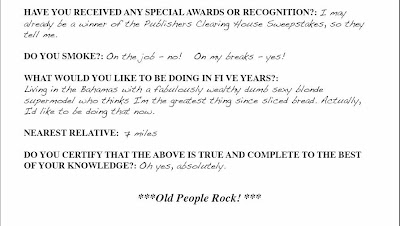




























































































































































































































































































The 38th Annual Conference of the MOGS was held on the 13th and 14th of February 2010 at the ITC Grand Central, Parel, Mumbai. The event was marked by high quality scientific content, a good delegate attendance and extensive participation by postgraduates through free papers, case presentations and poster displays.
The Conference inauguration was graced by the Chief Guest, Dr Sanjay Gupte, President FOGSI and the Guests of Honor, Ms Orna Sagiv, Consulate General of Israel and Mr Ajit Gulabchand, Chairman, HCC. The B N Purandare Awardee this year was Dr Armeida Fernandes for her outstanding work in women and child health issues in the community. I, being in the President's chair delivered the Inaugural address.
The theme topics for the year were Pelvic Floor Repair, Fertility Enhancing Endoscopic Surgery, and Medical Disorders in Pregnancy. The MOGS Dr MD Adatia Conference Oration was delivered by Professor Daniel Seidman on “IVF with no Financial Limitations – What are the success rates?”. The MOGS Dr SS Thakur Oration was delivered by Dr Duru Shah on “An Inconvenient Truth” on polycystic ovarian syndrome and its metabolic and genetic implications. The conference deliberations were highly scientific and involving. The panel discussions were detailed and interactive. The videos were of a high quality and demonstrated a number of surgical teaching points. There were adequate opportunities for the audience to participate in the discussions with the faculty members.
Valentine’s eve was marked by an entertaining and delightful Qawaali performance by Hamsar Hayat and troupe. The champagne evening continued late into the night and was a memorable occasion. The event was promoted as a charity with the proceeds donated to the ISKCON program for providing mid-day meals for school children.
The Conference was the first MOGS event where a live Twitter webcast provided updates in real time as events unfolded. The valedictory function was well attended with a number of mega prizes including a bumper prize of a 74 inch LCD television.
The Conference venue was well appointed and support from the ITC hotel staff was appreciated. In terms of time management, the first day fell behind schedule by an hour, but the second day was completed on time.
The Conference was attended by 649 delegates and there were 152 free paper presentations, posters and interesting case presentations. Each year the MOGS acknowledges and recognizes exceptional work and contribution of members
*MOGS Exceptional Service Awards
MOGS - Dr Ganatra Charitable Medical Center Award
Dr Neelang Shah and Dr Reena Wani
MOGS - Dr Sarojben Desai Excellence Awards
Dr Nayna Dastur
MOGS - Dr BN Purandare Outstanding Service Award
Dr Armeida Fernandez
MOGS - Dr Duru Shah Best Committee Award
Dr Shailesh Kore & Dr Sulbha Arora
MOGS Traveling Awards and Fellowships
MOGS - Dr Bhanuben M Nanavati Scholarship for Overseas Study – No application was received
MOGS - Dr CG Saraiya Traveling Fellowship – No application was received
MOGS - Dr Shantabai Gulabchand Traveling Fellowship Award 2009-2010 – Dr Sulbha Arora
*MOGS Academic Awards and Prizes
MOGS - Dr Pramila Bhatia Young Scientist Awards
1) Dr Sanket Pisat
2) Dr Rohit Pisat
MOGS - Dr Kamal S. Jain Prize
1) Dr Punit Bhojani
1) Dr Deepika Mehta
MOGS - Dr H Desa Silver Jubilee Prize
1) Dr Chinmayee Patra
*MOGS Prizes at the 38th Annual Conference
Fertility Enhancing Endoscopic Surgery
Dr LM Shah Prize: Dr Rani Bangar
Dr NA Purandare Prize:1) Dr Hemali Tekani
2) Dr Madhuri Dwivedi
Dr Shraddha Upasani Prize: Dr Sanket Pisat
Senior Category: Dr Pratik Tambe
Pelvic Floor Repair
Dr LM Shah Prize:Dr Divya Kanaviya
Dr NA Purandare Prize:1) Dr Neelam Barge
2) Dr Zelam Shahsuno
Dr Shraddha Upasani Prize: Dr Ashok Kumar
Medical Disorders of Pregnancy
Dr LM Shah Prize:1)Dr Pradnya Supe
2)Dr Meera Jayprakash
Dr NA Purandare Prize:1)Dr Siddesh Iyer
2)Dr Supriya Hambhire
Dr Shraddha Upasani Prize:1)Dr Rashida Bhanderwal
2)Dr Sandeep Pophale
Senior Category:1)Dr Amol Pawar
2)Dr Isha Khurana
Miscellaneous
Dr LM Shah Prize:1)Dr Vandana Gawade
2)Dr Kirti Gupta
Dr NA Purandare Prize: 1)Dr Nirali Patel
2)Dr Devika Chopra
3)Dr Maimona Ahmed
Dr Shraddha Upasani Prize:Dr Shrutika Kamat
Senior Category:1)Dr Vinita Salvi
2)Dr Padmaja Samant
3)Dr Punit Bhojani
4)Dr Anju Hazari
Dr DK Tank Prizes Interesting Cases:
1) Dr Arun Nayak / Dr Suprapha Amle
2) Dr Anita Soni
3) Dr Reena Wani
4) Dr Geetha Monappa / Dr Suvarna Khadilkar
5) Dr Geet Sarodey
6) Dr Rashmi Jalvee
7) Dr Naziya Ansari
8) Dr Archana Patil / Dr Ashwini Pawar
9) Dr Kinjal Mehta
10) Dr Ruchita Vijayavarjiya
MOGS – Dr Duru Shah Best Poster Prize:
Dr Shailesh Kore
MOGS Drake Award:
1) Dr Ashok Kumar Shukla
2) Dr Binti Batiyani
MOGS Best Poster Prize: Dr Gouri Gupta
Indo - Israeli Prize Best Video Presentation:
1) Dr Shailesh Puntambekar
2) Dr Makarand Masarani
MOGS Dr Ashok Mehra Prizes:
1st prize – Dr Kedar Ganla
2nd prize – Dr Aditi Dani






